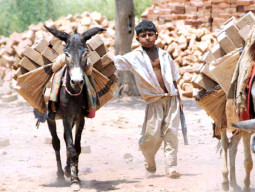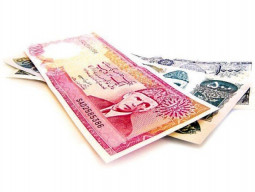
The most recent International Labour Organisation estimates based on the national Labour Force Survey 2010-11, revealed in the latest publication titled Understanding Children’s Work (UCW) in South Asia — a joint collaboration of ILO, Unicef and the World Bank — indicate that 5.7 million 10-17 year olds, representing almost 20 per cent of all children in the age group, are labourers, with more than two-thirds of those engaged with the agricultural sector in Pakistan. A similar proportion are in unpaid family work. Of the 15-17 year age group, 13.5 per cent are engaged in hazardous work.
Official data estimates show 74 per cent of children (10-14 year olds) to be exclusively in school, but dropout rates are high and closer inspection reveals large gender and rural-urban disparities. This is a cause for concern. Concerted action is required to establish the exact magnitude of child labour in Pakistan as a result of children’s non-engagement in the school system.
The good news is that Article 11 (3) of the Constitution of Pakistan prohibits employment of children below the age of 14 years. This is a testament of political will and should be the rally-point of all activism to end child labour. The provisions of the Constitution need to be exercised in order to safeguard the welfare of children working as labourers.
In addition, Pakistan has ratified the following conventions against child labour: ILO Convention 138 on Minimum Age of Work, Convention 182 on Worst Forms of Child Labour and Conventions on Forced Labour and Compulsory Labour, C29 and 105, respectively, as well as the Convention on the Right of the Child (CRC). These international commitments need to be mainstreamed into national law in order to ensure their application and should be enforced through various mechanisms. Progress on them should be reported on consistently and regularly. Besides, the process of devolution presents a unique opportunity for various legislative processes.
While gaps remain in the aspiration to eliminate child labour-particularly in its worst forms, the Government of Pakistan has been working consistently to address the issue. The Pakistani government and the ILO have been working together since 1994. Efforts to eradicate child labour in sectors such as carpet and weaving, surgical instruments and soccer balls were made and one notable outcome of this collaboration was the establishment of the Independent Monitoring Association for Child Labour, which saw the elimination of child labour in the country’s soccer ball value chain.
Taking lead from history, changes in the 70s and 80s within the soccer ball industry and in the general business environment led to a growth of informal systems of production, through which companies began to outsource soccer ball manufacturing to contractors. These contractors redistributed football production to outside workers, mainly women operating from home. This led to a breakdown in the monitoring and a control of working conditions. More and more children became involved in stitching and related activities as a way to augment family income. Parallel to this, consumer and business attention to labour conditions in global supply chains increased steadily. When media investigations of soccer ball manufacturing in Sialkot around the time of the 1994 Soccer World Cup and the 1996 European Football Championships found children working in the industry, the entire sporting goods sector in Sialkot was under threat. The outcome was that buyers suspended their contracts and orders in Pakistan, causing export earnings and subsequently the country’s GDP to dip.
With careful monitoring and the gradual elimination of child labour in the soccer value chain the country’s soccer re-emerged on the market by supplying the famed Brazuca football for the World Cup held in Brazil. This is a demonstration of how investing in the application of International Labour Standards (ILS) can lead to competiveness in global supply chains by securing international export markets that benefit the country at large.
Today, the Government of Pakistan is committed to eliminating child labour by investing $50 million in interventions such as Integrated Project on Child and Bonded Labour in Punjab. The Government of Balochistan has invested $300,000 to carry out similar interventions. These efforts are commendable and will be supported by the United Nations System in Pakistan through the provision of technical assistance.
In line with the theme of this year’s World Day against Child Labour (WDACL) the United Nations System in Pakistan calls for: free and compulsory education for all children until they reach employability age, investment in the teaching profession, an improved capacity to gather child labour statistics, effective policies and strategies to combat child labour, and the involvement of communities in this effort.
Published in The Express Tribune, June 12th, 2015.
Like Opinion & Editorial on Facebook, follow @ETOpEd on Twitter to receive all updates on all our daily pieces.





































COMMENTS
Comments are moderated and generally will be posted if they are on-topic and not abusive.
For more information, please see our Comments FAQ